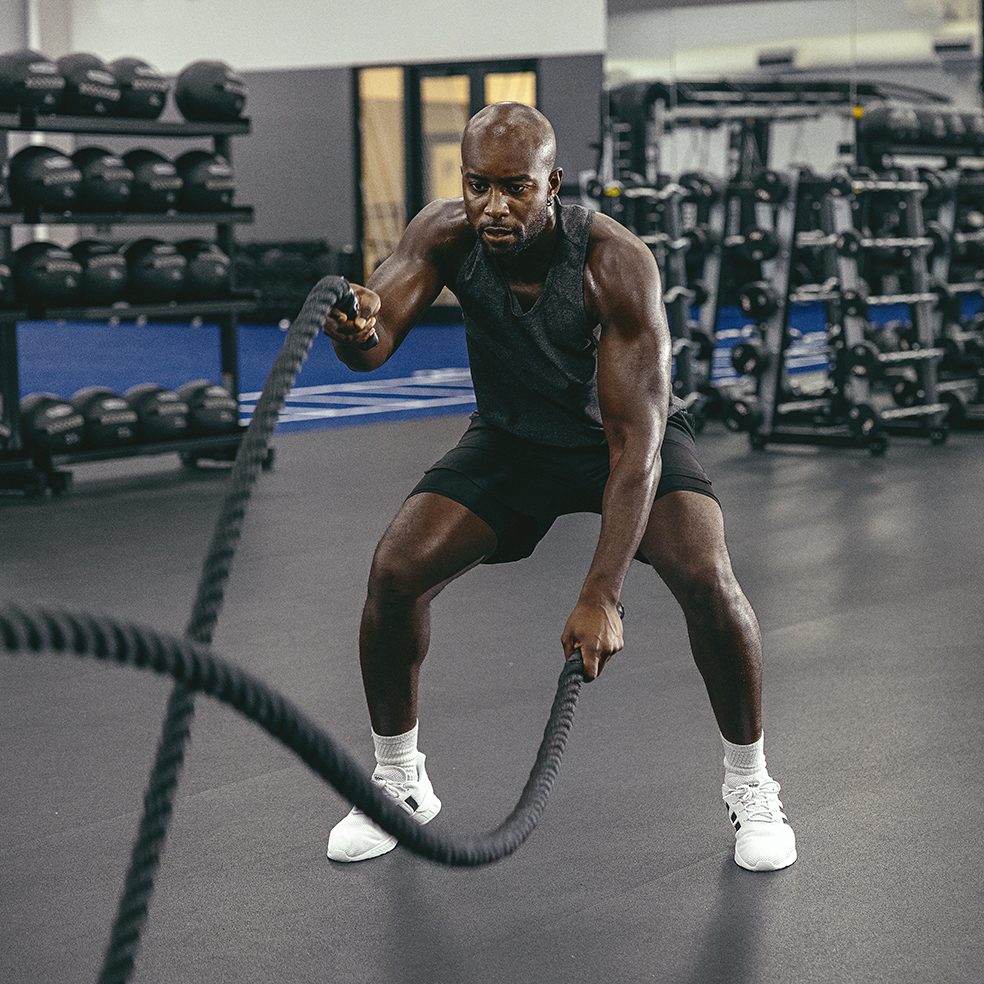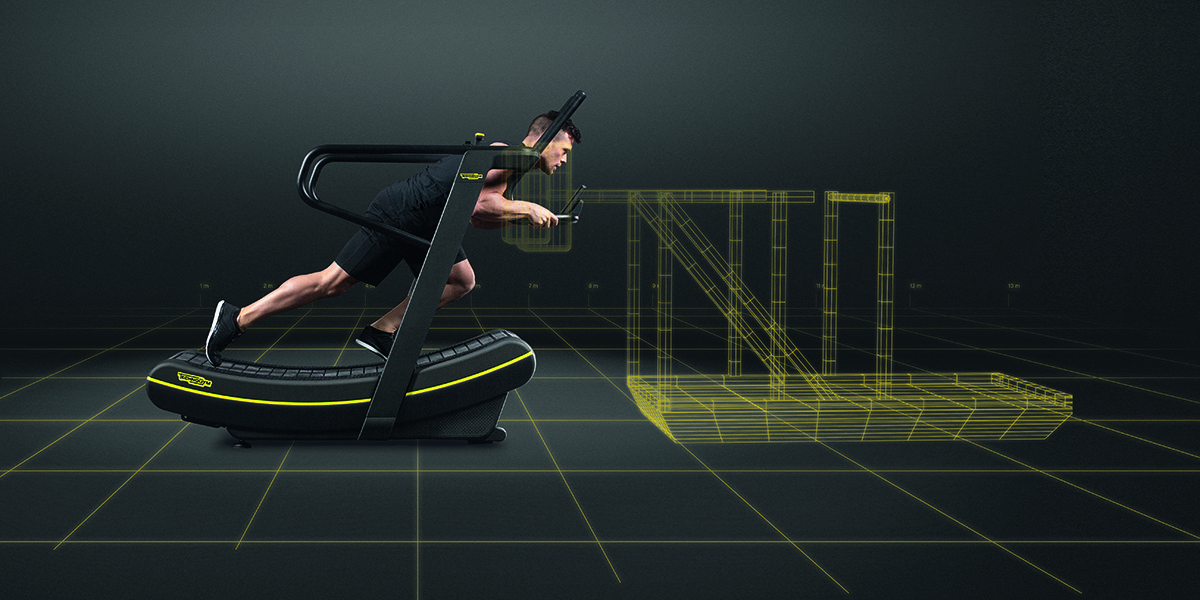WRITTEN BY WOODSIDE DIRECTOR OF TRAINING, JOHN BEANE
In the ever-evolving world of fitness, one training method has gained significant attention for its efficiency and effectiveness: high-intensity interval training (HIIT). This approach involves alternating periods of high-intensity exercise with short recovery periods, challenging the body to its limits. In this article, we will delve into the mechanisms and benefits of HIIT, programming guidelines and provide sample protocols using the Technogym Skillmill.

UNDERSTANDING THE SCIENCE BEHIND HIGH-INTENSITY INTERVAL TRAINING (HIIT)
Before we dive into the benefits, let’s establish a solid foundation by understanding what HIIT entails. HIIT involves performing short bursts of intense exercise, typically ranging from 10 to 60 seconds, followed by brief recovery periods. This pattern is repeated for a specific number of sets or a predetermined duration. The exercises can vary, including activities such as sprinting, cycling, bodyweight exercises etc. The key principle of HIIT is to push your body to its near maximum effort during the high-intensity intervals, creating a metabolic and physiological response that yields numerous benefits.
KEY SCIENTIFIC PRINCIPLES
Metabolic Changes: HIIT stimulates various metabolic pathways within the body. During intense exercise, there is an increased demand for energy, which leads to the activation of anaerobic metabolism. This results in the production of ATP (adenosine triphosphate) through processes like glycolysis. HIIT also promotes an increase in mitochondrial density and oxidative capacity, enhancing the body’s ability to utilize oxygen and produce energy aerobically.
EPOC (Excess Post-Exercise Oxygen Consumption): HIIT induces a phenomenon called EPOC, where the body continues to consume oxygen at an elevated rate even after exercise. This is due to the need for the body to restore energy stores, remove metabolic byproducts and repair muscle tissue. EPOC leads to a sustained increase in calorie expenditure post-exercise. Keep in mind that the amount of calorie expenditure is not considered as significant as previous studies may have indicated.
Hormonal Response: HIIT triggers the release of various hormones that play a role in metabolism and fat burning. One important hormone is catecholamines, such as adrenaline and noradrenaline, which increase lipolysis (breakdown of fat) and stimulate metabolism. HIIT also promotes the release of growth hormone, which aids in muscle growth and fat oxidation.
Cardiovascular Adaptations: HIIT elicits significant cardiovascular adaptations. It improves heart function by increasing stroke volume (the amount of blood pumped per beat) and cardiac output (the amount of blood pumped per minute). HIIT also enhances vascular function, improving the flexibility and dilation of blood vessels, which can lead to better blood flow and lower blood pressure.
Muscle Fiber Recruitment: HIIT recruits both fast-twitch and slow-twitch muscle fibers. The high-intensity intervals activate fast-twitch muscle fibers, which have a high capacity for force production and power. The recovery periods allow for the activation of slow-twitch muscle fibers, which have a higher capacity for endurance. This combination leads to improved muscle strength, power, and endurance.
These are just a few of the scientific principles underlying HIIT. It’s important to note that the specific adaptations and benefits may vary based on individual factors such as fitness level, training history, and genetics.

High-intensity interval training (HIIT) is a game-changer in the world of fitness. Its unique combination of metabolic and physiological responses leads to a multitude of benefits, including increased fat loss, enhanced cardiovascular fitness and improved endurance. Whether you’re a seasoned athlete or a fitness enthusiast, incorporating HIIT into your training regimen can take your fitness gains to new heights. Embrace the power of HIIT and witness the transformative effects on your overall fitness and well-being.
HIIT ON THE TECHNOGYM SKILLMILL
A main go-to for our HIIT training here at Woodside is the Technogym Skillmill. The non-motorized belt, dual handlebar and performance monitoring make this piece an exceptional option for HIIT. The Skillmill, located in The Playground, allows us to seamlessly work between resisted pushing and pulling, sprinting, athletic movements and walking for active recovery. Below are programming recommendations and sample protocols utilizing the Skillmill that you can integrate into your program.

PROGRAMMING RECOMMENDATIONS
The recommendation for HIIT programming sessions per week can vary depending on individual goals, fitness levels and overall training program. However, the general consensus among fitness experts and researchers is that performing HIIT workouts 2-3 times per week can yield significant benefits while allowing for adequate recovery. This frequency strikes a balance between providing enough stimulus to elicit physiological adaptations and allowing the body to recover and adapt to the high-intensity demands of HIIT.
It is important to note that HIIT is a highly intense form of exercise, and it places considerable stress on the cardiovascular and musculoskeletal systems. Therefore, it is crucial to listen to your body, monitor your recovery and adjust the frequency of HIIT sessions accordingly. Some individuals may benefit from starting with 2 sessions per week and gradually increasing to 3 sessions as their fitness level improves and their body adapts to the demands of HIIT.
Additionally, it is recommended to incorporate other forms of exercise, such as strength training and low-intensity cardio, into a well-rounded fitness routine. This approach ensures a balanced and comprehensive approach to overall fitness and reduces the risk of overtraining or injury.
Ultimately, consulting with a Woodside Personal Trainer can provide personalized guidance and help determine the optimal frequency of HIIT sessions based on individual needs, goals and training capacity.
Session One | Sprint, Push, Pull, Shuffle
Time to Complete: 20 Minutes
Interval: One Minute On, One Minute Off
Rounds: Four
The Protocol:
- Dynamic Warm Up
- 1A. Sprint
- 1B. Complete Rest
- 2A. Resisted Push
- 2B. Complete Rest
- 3A. Resisted Pull
- 3B. Complete Rest
- 4A. Shuffle Left
- 4B. Complete Rest
- 5A. Shuffle Right
- 5B. Complete Rest
Session 2 | Peaks and Valleys
Time to Complete: 15 Minutes
Interval: By Minute
Rounds: Five
The Protocol:
- Dynamic Warm Up
- Work – Resisted Push – 1 Minute
- Recovery – Walk – 1 Minute
- Work – Sprint – 20 Seconds
- Recovery – Walk – 40 Seconds
Our Training team can help you incorporate high-intensity interval training into your workout routine. To learn more click here or email us.


